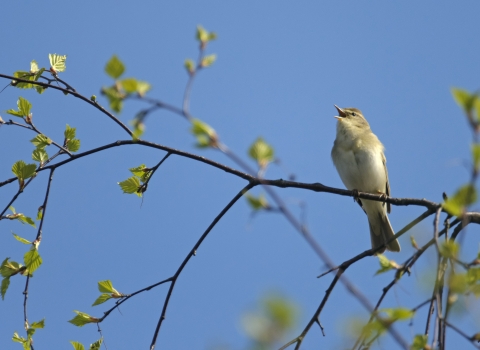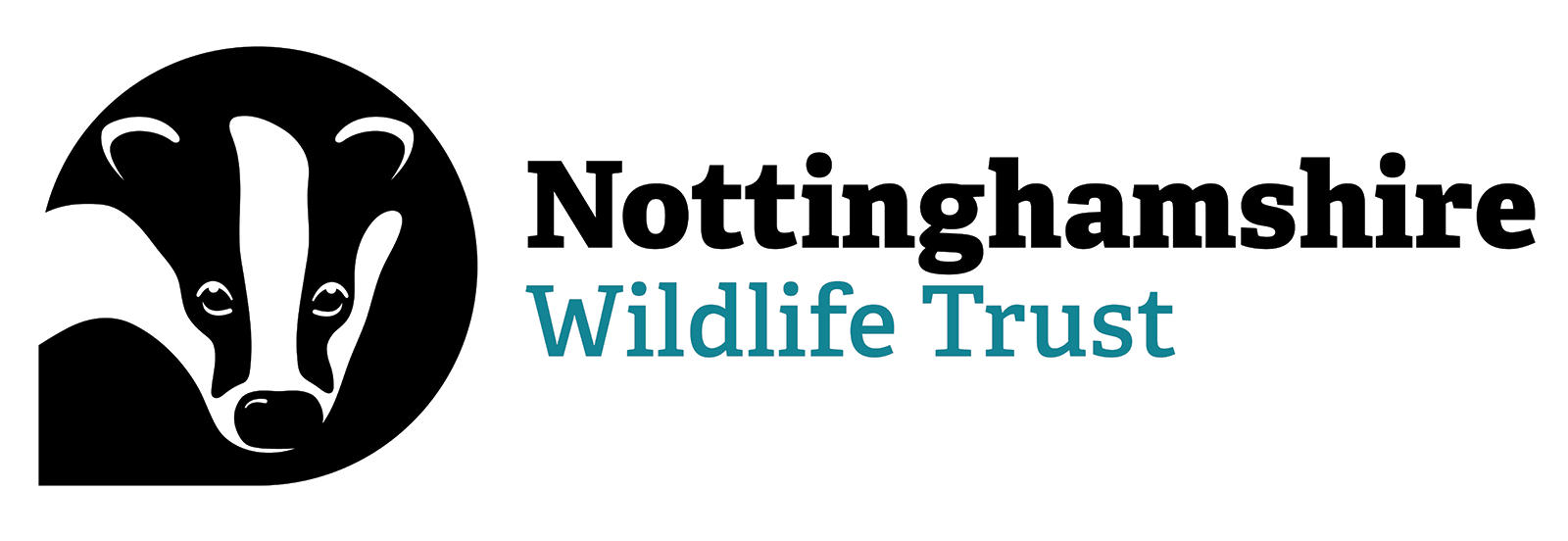
Amy Lewis
Caring for birds
Our feathered friends
Birds are probably the most noticed visitors to our gardens, but some species such as house sparrows and house martins are becoming increasingly scarce due to habitat loss and disease.
However, there are many simple actions you can take at home to help birds flourish on your patch.
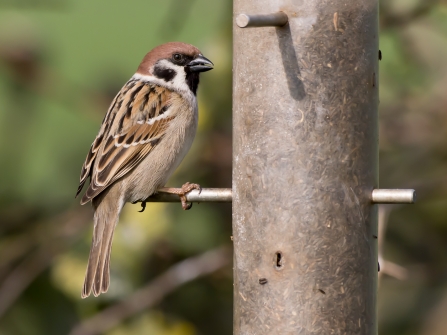
© Andrew Parsons
Feeding garden birds
Putting up a feeder or table is one of the easiest way to attract birds to your garden, especially during the winter months when food is harder to come by.
However, understanding food types and feeding habits will help you attract a variety of different species.
Hanging feeders
These types of feeder will attract a wide mix of birds including most species of tit, greenfinch, goldfinch, and house and tree sparrows. Fill them with a general seed mix that includes energy rich sunflower seed or suet if you want to attract robins.
Specialist hanging feeders
Niger seed feeders
These specialist feeders are designed to hold the the tiny niger seed and will attract goldfinches and siskins.
Peanut feeders
Peanuts are an ideal winter food and should only be provided in mesh feeder as whole peanuts pose a choking hazard. Suet pellets can also be used in a mesh feeder, either on their own or mixed with peanuts.
Fatball feeder
Fat balls are another great winder food source and can be brought or made from suet or lard mixed with seed. These can be hung in special fat ball feeders, or they can be smeared into coconut shells or hung on string.

Live food and ground feeding
A number of garden birds are primarily ground feeders. These include blackbirds, song thrushes, collared doves, robins and dunnocks. Robins particularly love live mealworms, which are high in fat and protein. All of these birds are best fed from a bird table - find out how to make your own below.
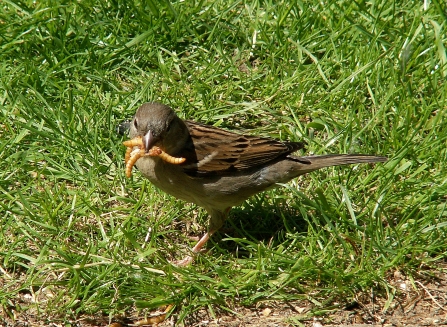
Joan Burkmar
Plants and insects
Chose a variety of pollinator and insect friendly plants for your garden to attract a natural food source for birds.
Also include a mixture of berry or fruit bearing shrubs or trees like skimmia, pyracantha, euonymus, hawthorn, ivy, crabapple, rowan, holly and wild cherry.
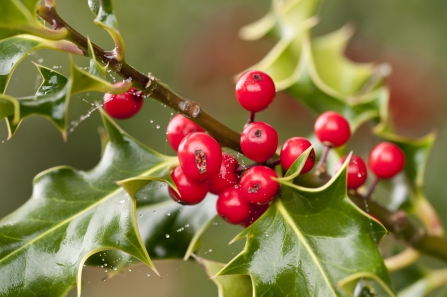
Positioning and maintenance
Avoid hanging feeders within easy reach of predators such as cats by ensuring that they are not too low, or within reach of branches or fences.
Keep your feeders filled to encourage return visits and change feed regularly to prevent mould or staleness. Clean your feeders periodically and take care to also clear up discarded food on the ground to avoid spreading pests and disease.
Providing water
It is also important to provide a fresh source of water for birds, especially in freezing conditions when ice forms over ponds, puddles and other water sources. Water can be provided in the form of a bird bath or a simple dish of water.
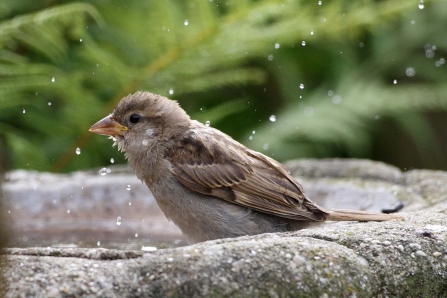
Margaret Holland
What not to feed
Don’t put out salty food or dry bread as this can be harmful for birds. Also avoid cooking fats as these stick to bird's feathers and harbour bacteria. To avoid food poisoning, make sure to only provide live mealworm unless they are dried, and don't put out whole peanuts as these are a choking hazard.
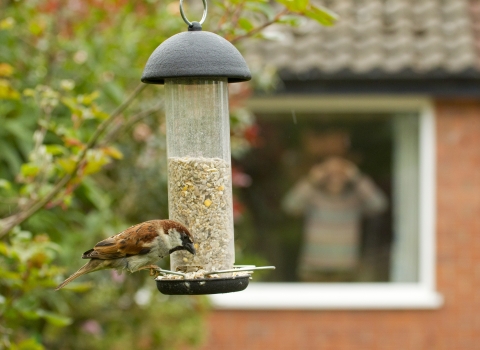
Buy online!
Our online shop provides all the bird feed types and feeders you could possibly need delivered straight to your door.
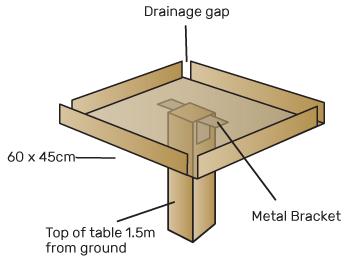
Build a bird table
You can construct a simple bird table from exterior grade plywood attached to a pole with metal brackets.
A lip around the edge of the table will prevent food spilling over the edge, whilst gaps at the corners will provide drainage.
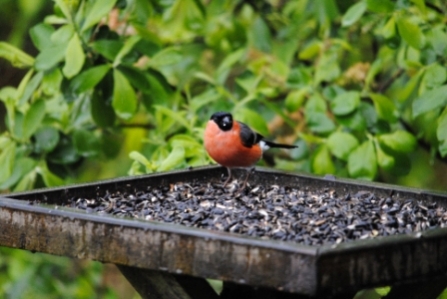
Amy Lewis
Nest boxes
Provide a home for birds in your garden by installing a nest box.
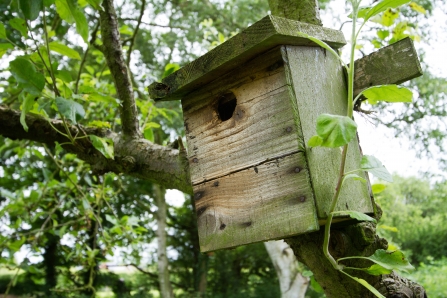
Al Greer
Choosing the right nest box
Different types of box will attract different species. Whilst most birds prefer a closed box with a small entrance hole, some - like robins, wrens, blackbirds and song thrushes - use an open fronted box. Species like swifts, swallows and house martins require a specialist box as they nest under eaves and gable ends of buildings.
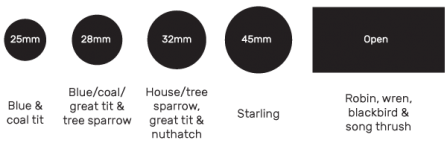
Positioning your nest box
Place your box in a sheltered position on a tree or wall, facing north east to south east to avoid prevailing wet weather and the heat of the midday sun. Make sure your box is at least 2 meters off the ground and out of reach from predators.
Nest box hygiene and maintenance
Clean out your box with warm soapy water once a year, 2-3 weeks after any birds have fledged. This will help to prevent disease and ensure that the box is ready for new occupants next year.
If you decorate your box, make sure you use a water-based paint and not lead-based paints or creosote, as these are toxic to birds. If you need to replace part of your bird box, avoid pressure treated wood, which contain harmful preservatives and fungicides.
Build your own nest box

You will need:
Rough cut, unplaned, untreated softwood timber, scrap rubber, galvanised nails, a saw, hammer, drill, pencil and ruler.
What to do:
-
Mark out and saw panels (see diagram for measurements):
Write the name of each panel onto the marked wood - Choose your box type:
Hole fronted box
(Blue Tits: 25mm / Great Tits: 28mm / Sparrows: 38mm / Starlings: 45mm)
Open fronted box (for Robins) - Assemble the box:
Nail the panels together.
Fix on the roof with a hinge or strip of old rubber
Place your box 2 - 5 metres above the ground, somewhere sheltered
